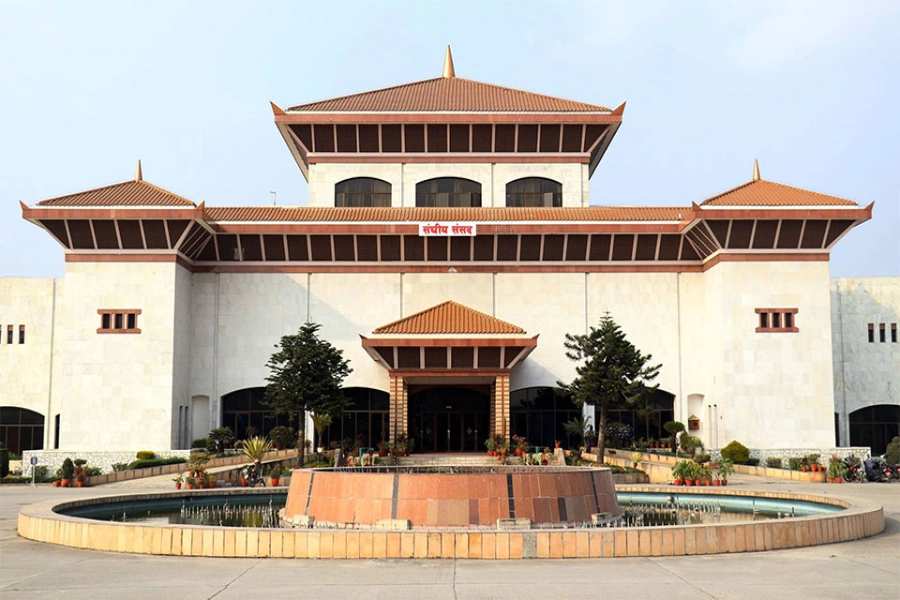During Tihar, row of different stalls laden with these flowers are seen on the either side of Kathmandu’s streets
Tihar is at the doorstep. It is the second biggest Nepali festival after Dashain. Crow is worshipped on Kaag Tihar, the first of the five-day-long festival. Dogs get special treatment on the second day, called Kukur Tihar. On the third day (Gai Tihar), people show their appreciation to cow by garlanding and feeding them. In the evening, Laxmi, the goddess of wealth, is worshiped by lighting oil lamps (Diyo). The fourth day of Tihar is observed as Goru Tihar and people perform Govardhan Puja. The fifth and last day of Tihar called Bhai Tika, and it is observed in a special way. Sisters offer colorful Tika to their brothers to ensure long and healthy life. Tihar is enjoyed with a variety of sweets, display of light-works, colors of blessings and flowers like marigold (Sayapatri) and globe amaranth (Makhamali). Marigold is a must for Tihar.
Marigold: Part of culture
Makhamali and Sayapatri carry their own significance, especially in Tihar. They are used to make garlands for Bhai Tika. According to the Hindu myth, the god of death, Yamraaj, once went to meet his sister Yamuna. Yamuna welcomed her brother with decoration, healthy food, and put the garland of makhamali and sayapatri flowers and blessed with Tika on his forehead. Yamraaj was very happy and blessed that whoever puts Tika and garland on that day will surpass death. Since then, these flowers have become an integral part of Hindu culture.
During Tihar, row of different stalls laden with these flowers are seen on the either side of Kathmandu’s streets. These flowers are also used for decoration and medicinal purpose. Makhamali has a long storage property; it can be stored for even a year. On the other hand, Sayapatri is a very beautiful and valuable flower. Garlands of Sayapatri is also used to decorate houses in Tihar. The flower is used to worship Hindu deities, especially Goddess Laxmi.
Scarcity of flowers and garlands during Tihar

Marigolds were first discovered by the Portuguese in Central America in the 16th century. The flower is used to demarcate special spaces like pavilions and to line around sacred fire-pits or kunds in which special puja ceremonies are performed. The bright orange and red colors of marigolds are seen everywhere in daily life in the Indian sub-continent.
According to the Floriculture Association Nepal (FAN)’s estimate, Marigold garlands worth over six million rupees will be imported to Kathmandu from India for Tihar. The FAN has estimated that the number of imported Marigold garlands will go up to 200,000; 50,000 more than last year. Though the country is gradually becoming self-dependent on Makhamali (Globe amaranth) and Godawari (Chrysanthemum), our domestic production of Marigold is still insufficient to meet the demand.
Makhamali grows up to 24 inches in height with multiple colors such as purple, red, white, and pink. The flowers are also used to make tea and can help recover from heart diseases. It is believed that Makhamali never gets wilts and wither. So, sisters offer Makhamali garlands to their brothers on Bhai Tika, wishing them long life, like the flower. Seeds have high fiber and low saturated fat.
Importance of walnut and other fruits
The ritual of cracking a walnut is one of the interesting parts of Bhai Tika. Sisters crack hade okhar (walnut with hard shell) with Lohro (stone), and this supposedly ends troubles in the life of brothers. Besides walnut, almond, pistachio, cardamom, and cloves are a must during Bhai Tika. From health perspective, the significance of dry fruits in Tihar is that they are beneficial to keep our body warm and healthy during winter.
Walnut is grown in the mountains at an elevation of 1,000-4,000 meters. Walnut trees are large, with older trees having a significant trunk diameter. They often have deep roots which give them a distinct advantage in stress tolerance. The actual nut—and the tree species itself—have a wide diversity and the size and shape of nuts vary depending on the type.
Another important fruit for Tihar is citron (Bimiro) and it falls under citrus group. Most of the citrus fruits, including citron, are native to Nepal and are seen in the markets during Tihar. Some of the other fruits commonly used are amala (Indian Gooseberry), grapefruits, chestnut and coconut.
During the time of Laxmi Puja and Bhai Tika, bimiro is worshipped. In Newari culture, bhogate (pomelo) is also worshipped. Some people believe that Yamaraj and his sister Yami love bimiro. And so the fruit symbolizes their love and devotion.
bhairabr@gmail.com





































